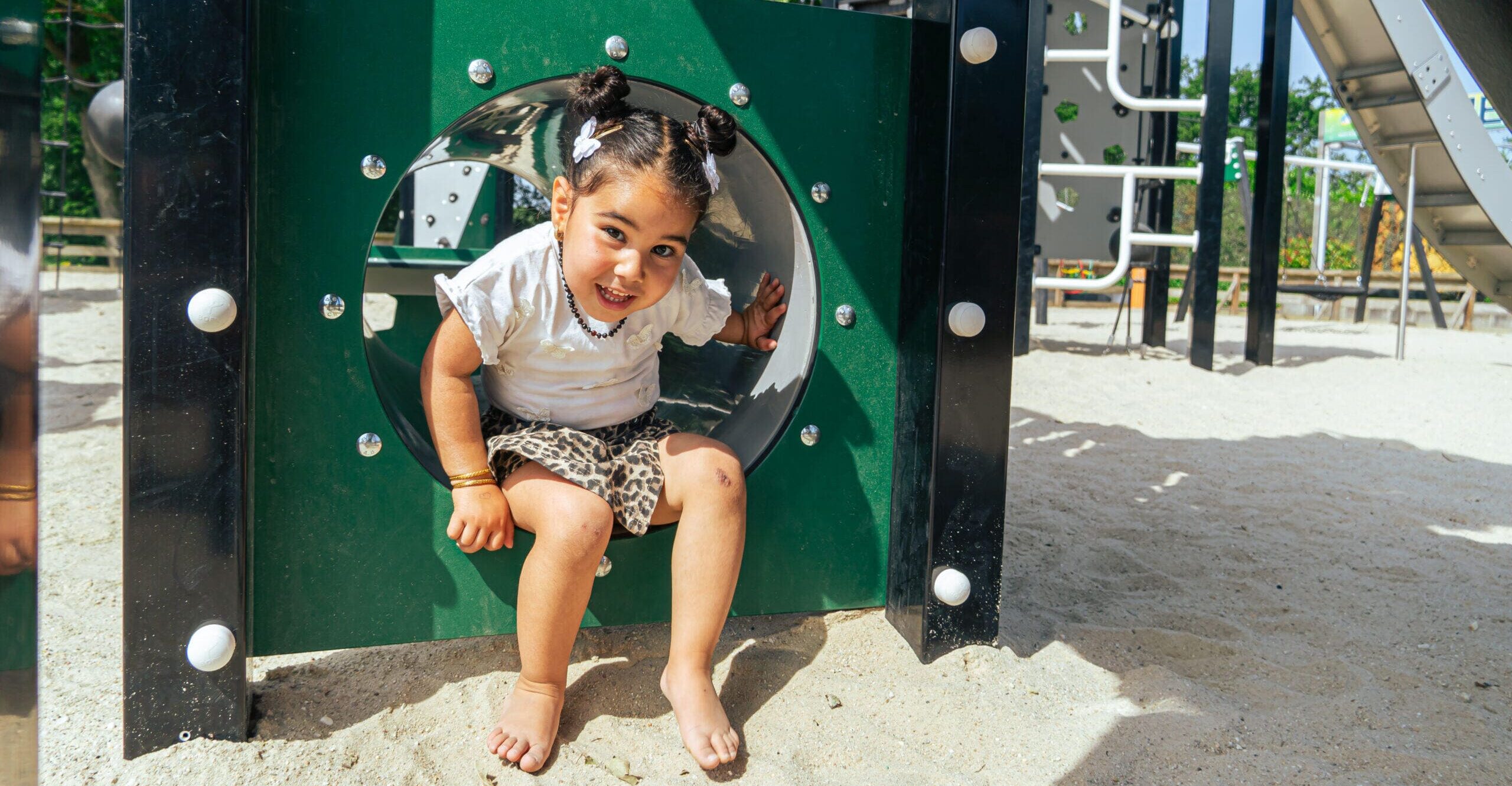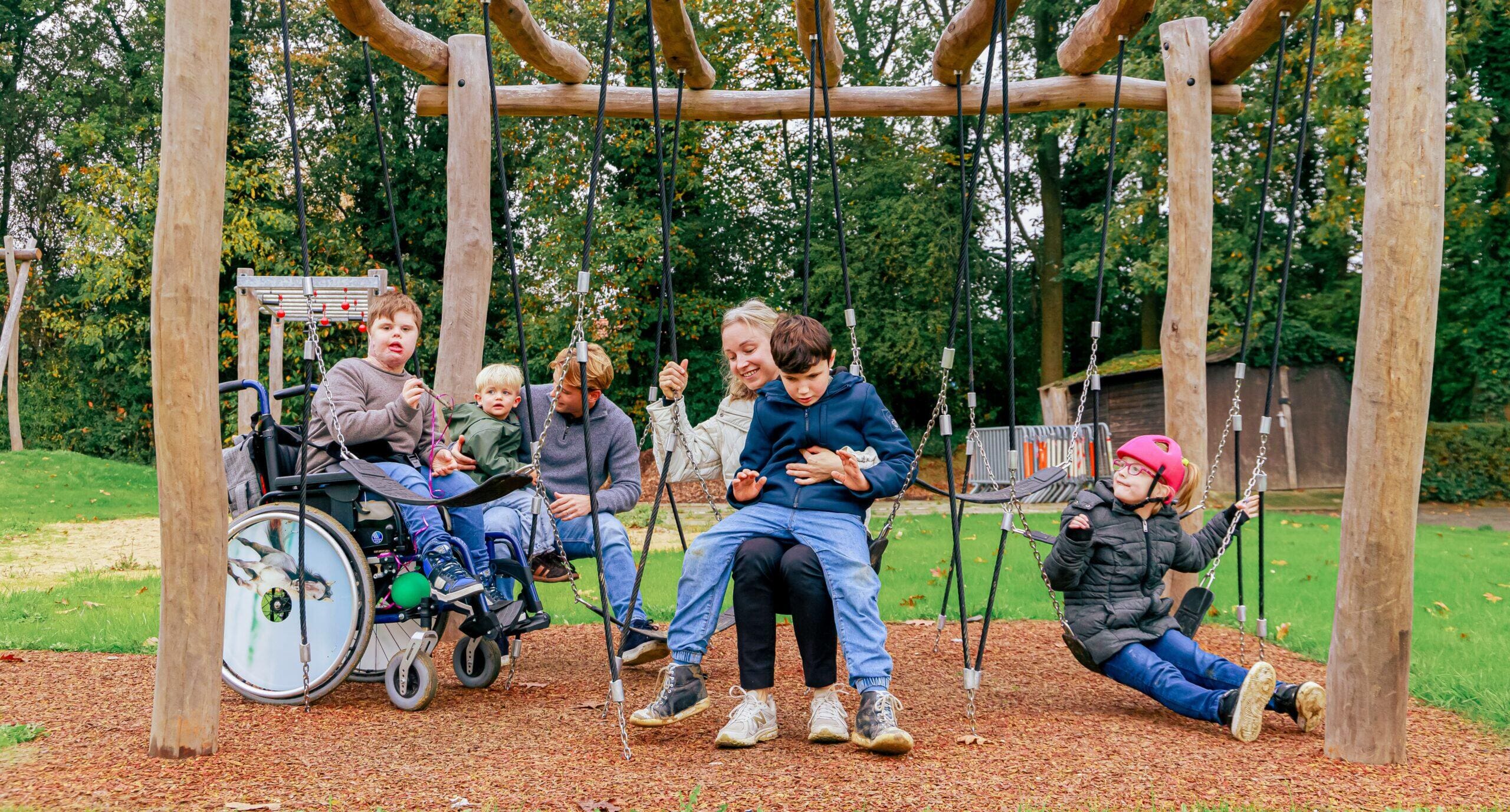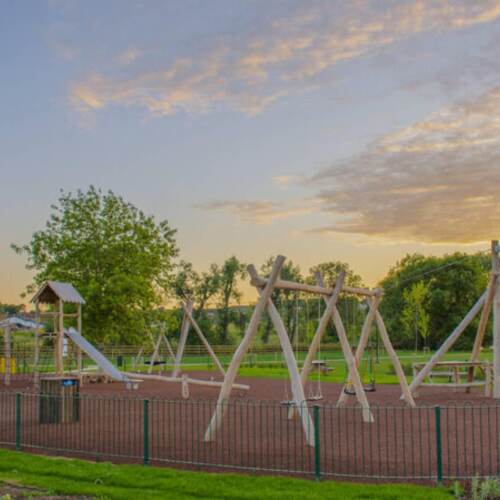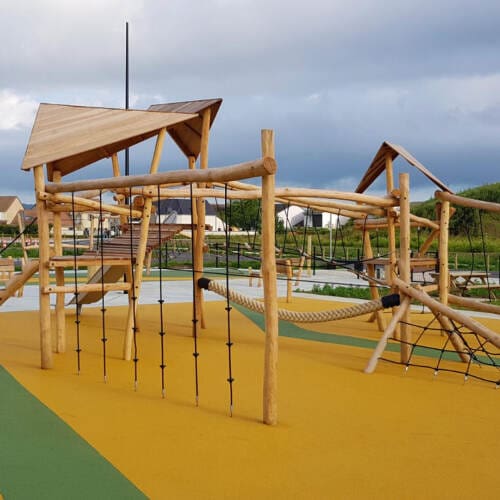A playground design for playtime fun and much more!
For us, it’s all about creating attractive outdoor spaces where playing, sports, exercise, meeting and relaxing take centre stage. It all starts with a crucial question: who are the users of this space? We take this question seriously and take into account the four play types (rough players, pushers, builders and observers), different needs, age groups and different play values when designing.
Our range of playground equipment and street furniture is exceptionally extensive. Whether you are looking for a specific piece of playground equipment or a complete design for a vibrant play and exercise environment in your municipality, recreation area, school playground or care garden, we have the solution for you.

Designingaplaygroundtosuityourneeds
At BOERplay, playgrounds come to life because we take care of the entire process of developing a new play area: from designing the playground to constructing it. Our passion is to create play environments where children can make their dreams come true, have adventures and forge friendships. We are committed to every aspect of this process, from the initial idea to the final realisation.
Our experienced team is ready to realise your playground project, whether you are looking for a specific playground design that reflects your vision or want us to construct and furnish the entire playground. Customisation is our priority, and we work closely with you to create a playground that fits seamlessly into the environment and meets the needs of your target group. Safety, sustainability, creativity and fun are central to our approach. We include the following elements in our design phase:
- zoning by age
- challenging design for every type of person (Energizers, Structure seekers, Builders and Observers)
- active learning
- sports & exercise
- meeting people
- experiencing nature
- mobility & traffic movements
- playing/exercising together (including design)
- risky play and learning
- the power of imagination
Want to know more? Download the inspirational brochure
These organisations also have a BOERplay designed play area
See which organisations have already taken the plunge and be inspired.
Designing a playground involves more than just replacing play equipment; it offers a unique opportunity to create an environment that contributes to an unforgettable experience for the children who come to play there. Whether it is a municipal playground or a play area at a recreational facility, children have a lot of fun there. Friendships are formed in playgrounds, and children can also learn and discover a great deal there.
Below are the steps you can take when designing a playground and why each of these steps is important.
- Step 1 – Determine the purpose and vision of the new playground: What do you want to achieve with the new play area? As a restaurant owner, you want guests to stay longer on the terrace. Or you may want to make the play area more attractive for hot summer days by providing shade, for example. If it is a municipal playground, you may want to make it suitable for other age groups in the neighbourhood. And you want the play area to remain relevant in the coming years, even as the children get older. It is also important to consider what look and feel the playground should have. Take the needs and wishes of visitors into account when drawing up a vision for the playground.
It is important to define a clear goal and vision because this will guide the design of the playground. In this way, the playground can effectively contribute to achieving the set objectives and the intended experiences.
- Step 2 – Conduct an inventory: Map out the current play area. Also look at traffic flows, existing play elements and the current condition of these elements. In the case of a municipal playground, it is also a good idea to evaluate the route to the play area. Is it safe for children to go to the play area on their own, or do they need to be accompanied by an adult?
It is important to carry out a thorough inventory because this provides insight into the possibilities of the location. It also helps you make informed design choices.
- Step 3 – Draw up a budget: Determine the available budget for the design of the playground and consider whether external financing options can be used. In the case of public playgrounds, the local authority generally takes care of maintenance. However, if you manage the playground yourself, you must also take into account the costs of maintenance or any future expansions.
It is important to draw up a realistic budget, as this will help you set achievable goals, plan the implementation and apply for funding. If all the financial resources are not immediately available, it is also possible to carry out the project in several phases.
- Step 4 – Choose a specialist design team: Work with a company, such as BOERplay, that has expertise in designing play landscapes and can translate your vision and goals into a suitable design.
It is important to choose a design team that specialises in designing play landscapes. A carefully designed playground meets the play needs of children and takes into account aspects such as safety, accessibility and legal frameworks.
- Step 5 – Integrate sustainability: Consider sustainability measures such as reusing equipment or parts thereof. These can be parts from the current playground that are still considered usable after inventory. Municipalities often have playground equipment from other playgrounds in storage that is suitable for reuse. You can also consider the use of environmentally friendly materials, climate adaptation and biodiversity.
It is important to integrate sustainability into the playground design, because a sustainable playground contributes to a “green” future for the children growing up today. It also has a positive effect on the living environment around the playground.
- Step 6 – Presentation and feedback: Share the design of the new playground with all stakeholders, such as neighbourhood children, their parents/carers or regular visitors to your recreational facility. This will allow you to hear about any issues in the current situation, such as dangerous entrances or exits, tall play equipment that is too close to a back garden, allowing children to see into the back garden, and so on. Collect feedback and see if you can and want to make any adjustments based on this.
It is important to receive feedback on the design. Based on this, the design can be adjusted to better meet the needs of the users. Moreover, this will create more involvement.
Issues in designing a playground
Designing playgrounds is not just about installing a few pieces of play equipment. We strive to create a lively environment where children can discover, play and learn. A playground where parents can let their children enjoy everything there is to discover with peace of mind.
When designing a playground, we take the following into account:
- Safety: We ensure that the play equipment and the entire play landscape comply with strict safety standards, as described in the EN 1176 standard or the Commodities Act Decree on Attractions and Play Equipment. Our materials are carefully selected to guarantee durability and safety.
This is important because children must be able to play safely in a playground without supervision from parents or carers. Because supervision is not expected, the play equipment and surface must comply with legal requirements. These requirements are stricter than when you install play equipment in your back garden. The law assumes that the playground in the garden is supervised at all times and that you, as a parent/carer, can assess the risks and intervene appropriately. Independent play, without supervision, promotes children’s self-confidence and strengthens the bond between parents and children. In addition, a safe playground contributes to the reputation and image of the location.
- Accessibility: Ideally, a playground is a place for all children, regardless of their physical abilities. When designing play landscapes, we strive for interaction, take the four types of play into account and consider the age structure. This gives every child the opportunity to discover the joy of playing (together).
This is important because an accessible playground is not just about physical accessibility, but about creating an environment in which every child feels welcome and at ease.
- Spatial layout: Our playgrounds are designed with different types of play and children’s needs in mind. We create spaces for active play, quiet corners to relax, places to explore and plenty of room for social interaction.
This is important because a well-thought-out spatial layout ensures that all children can discover and develop their own playing style. They are sufficiently stimulated to seek out challenges, but they also feel comfortable enough to be themselves in the playground. What’s more, you stay longer at a fun playground and are happy to come back!
- Creativity and play: We stimulate children’s creativity and imagination by incorporating various play values into the playground design. From traditional play equipment to elements designed without a specific purpose, encouraging children to explore for themselves.
This is important because free play stimulates the development of imagination and problem-solving skills. By playing freely and creating their own rules, children learn to think independently, take risks and come up with solutions to challenges they encounter during play. This contributes to their cognitive development, social skills and emotional resilience.
- Sensory experiences: We integrate elements that promote sensory experiences into the playground design. These include adding water, sand, musical elements or fragrant and edible plants.
It is important to offer children the opportunity to discover the playground in a sensory way. This enhances the play experience. It also provides an educational experience that promotes a connection with nature.
BOERplay has been designing outdoor spaces for play and exercise since 1961.
With over 60 years of experience and expertise in designing (inclusive) play landscapes, exercise and sports areas, we provide our services and products both domestically and internationally. We collaborate with schools, recreation companies, local authorities and other organisations, applying various design concepts based on the needs of the users. When designing outdoor spaces, we look through the eyes of the user and select
exercise and play equipment that meets the different needs, ages and play types of children, young people, adults and the elderly. In this way, we contribute to physical and mental health and social well-being.
Our play equipment is manufactured by our craftsmen in our own factory in Nieuwendijk (NL). We guarantee a long service life by using sustainable materials, such as FSC®-certified wood, galvanised and coated aluminium and recycled plastic. When designing play equipment and playgrounds, we give safety the highest priority. In addition, we strive to reuse materials in order to promote sustainable solutions that are valuable now and in the future.













